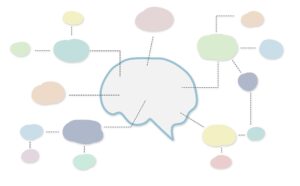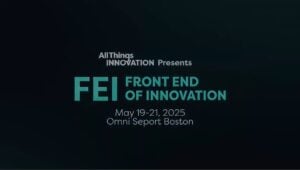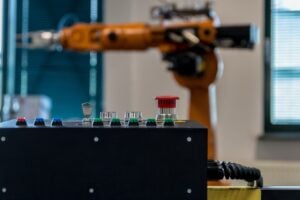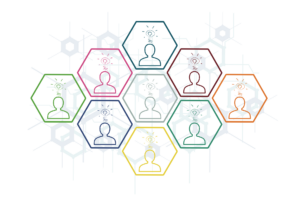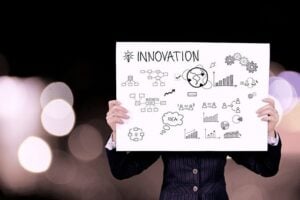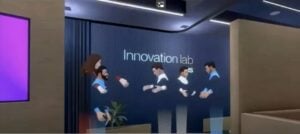Keep Asking Why
A rapidly changing landscape, from the pace of advancement with artificial intelligence to the scarcity of resources, is putting corporate innovation best practices in the spotlight. As priorities shift, some teams find themselves in a pressured environment with such as issues as budget cuts, fear of risk taking and an override to maintain the status quo.
Yet others find themselves thriving with the level of uncertainty in the market in regard to the political, corporate and economic atmosphere. Just what are some of the best practices in innovation that can keep the ship afloat?
For food and beverage innovation veteran Zeinab Ali, who recently retired after a career in senior research and development roles with brands like Campbell Soup Company, PepsiCo and Nabisco, it really is about individual relationships, cross collaboration and partnership building.
“A lot of people may focus on technical aspects and many other segments. For me, the key is very simple. It is the relationship between the business, especially marketing, and R&D. If that is not working, it’s a recipe for innovation failure. I always say that the marketer who knows as much about R&D is your best friend,” says Ali.
There is also an aspect of clear and transparent communication among the teams of an organization. It becomes correspondingly more challenging to work within the business’ walls when there is a lack of transparency.
Ali observes, “Be transparent to the business of your capabilities, your knowledge, your understanding about that particular innovation—and you could be wrong, and they can help you correct it. But if you’re very transparent and vulnerable with them, with marketing and vice versa, innovation will work. When the business leadership asks, R&D, why don’t you do this? The business now knows what the capabilities are for R&D. Maybe in three years, four years, we will have the capability. They have the knowledge about it because we educated them as much as they educated us.”
Advocacy across all parties then becomes part of the interdisciplinary collaboration and the open innovation environment. Stakeholder and team engagement is also crucial.
“The stakeholders become your advocate for what you can do and what you cannot do,” says Ali. “Maybe you need three more months to finish that innovation because you are transparent with them. The innovation will get into the market sometimes sooner because of that transparency and that sharing of information. If R&D does not share the innovation and the business does not share information, then everybody is working in the dark. There needs to be cross collaboration. That’s really the basic foundation. In my career, I’ve worked on innovations that failed, and I’ve been with innovations that have been successful. The difference was just that. It’s the right working relationship that works, that is transparent to each other from day one.”
Of course, as part of this stakeholder engagement comes the task of listening and to be curious as well. And… perhaps even to act like children?
Ali adds, “I think listening to the people before you, listening to what worked, what did not work, and be curious. Ask why. Why did it not work? What happened? Why did it work this time? Children are actually the most creative and innovative in their thoughts. Why? Because they have no fear of failure. They don’t have self-doubt yet, and they ask questions. Just learn from them: Ask questions. Don’t have that fear of failure. Don’t have self-doubt, and innovation will follow.”
“It goes back to that stakeholder relationship,” she says. “If we start together upfront and be together at the front end of innovation, we can see the need of that innovation together.”
Broaden the Innovation Imperative
Other innovation thought leaders in the community point to the need for organizations to have a flatter, broader innovation imperative. This is sometimes called the democratization of innovation, that principle that sees and allows innovation to come from all parties in the company. It is not relegated to one department, although R&D or innovation may serve as the tip of the spear.
Leslie Grandy, Lead Executive in Residence, University of Washington – Michael G. Foster School of Business, relates: “It is essential that businesses are honest about their appetite for innovation and imbue the entire organization with the belief that inventive and disruptive ideas can come from anywhere in the business. Often, when companies create innovation labs, they sequester a few imaginative employees into a division that loses sight of the execution demands of disruptive ideas. They fail to include employees not traditionally considered to be working in creative roles. This can reduce focus on business model innovation, cause executives to miss opportunities to improve operational workflows or make it challenging to commercialize novel ideas that emerge.”
Grandy is also the author of Creative Velocity: Propelling Breakthrough Ideas in the Age of Generative AI. For Grandy, the concepts of the silo mentality, or of an isolated innovation lab with no connection to the actual organization’s needs and operations, is long overdue to be replaced.
“This approach can also divide employee culture and fuel a creative distortion field,” she says. “A creative distortion field is a negative phenomenon that occurs when creativity is constrained or misdirected due to factors that limit creative thinking and hinder the commercialization of innovative ideas.”
It is the democratization of innovation in some form that can make every employee contribute to the innovation imperative that the organization needs and demands.
“The most critical ‘best practice’ is to consistently encourage and support employees in all roles and levels to nurture their capacity to think big. This does not mean scheduling a brainstorming session or offsite occasionally. Instead, it requires leadership to invest in training and development, include employees across the enterprise in the development of transformational ideas, and invent on behalf of customers,” advises Grandy.
People, Process & Technology
While AI as an emerging technology is making headlines for its efficiencies and other useful benefits, the innovation community seems to be striving to keep its foundational focus: Keep your eye on the customer’s needs and preferences and remain focused on problem solving. It’s an established approach that can sometimes get lost in the race to the next shiny object.
As Lisa Costello, Director and Head of Platform, Prologis Ventures, notes, “Innovation isn’t always about groundbreaking technology. My definition of innovation is implementing new ideas to make something better. Whether it’s implementing a new solution, a new process or new technology, all those things can be innovation. Ultimately, innovation is people, process, and technology or a combination of those three things.”
For Costello, technology potentially takes a back seat to a more nuanced, problem-solving approach—become obsessed with the problem, and likely, that leads to becoming obsessed with the customer.
“My best practice when it comes to innovation is to become obsessed with the problem itself rather than a solution,” suggests Costello. “If you start with a technology solution, like AI, for example, you kind of pigeonhole yourself into trying to work with a tool or a process the way that it is today. Instead, start with, ‘why is this problem impacting the people that it’s impacting?’ It opens up the opportunity for a lot of different ways to solve for that problem, then you can apply a solution or tool like AI to solve for it.”
She adds, “My advice is to get married to the problem, not the solution. If you get married to the solution, you might have internal bias. Or you might get stuck. You might realize that your solution isn’t what you thought it was or have issues with the budget for it or the availability of resources. But if you fall in love with the problem and how to solve for it, there’s just a lot more ways that you can go about fixing it for your customer.”
AI may be one new and advanced tool in the innovation toolbox, but as Costello suggests, there are more human-centric approaches that can be successful.
“People tend to think that they need to be an expert in technology to be innovative. I just don’t believe that to be true,” says Costello. “Start with problem solving, which is what innovation boils down to. And then, technology can be applied to it.”
Applying A Roadmap to Innovation
For Emil Georgiev, Vice President – Customer Experience Design, IKS Health, having a structured roadmap is a key component to the type of translational innovation that is occurring in healthcare today. This really entails having a structure in place that can be followed for a rigorous product development process.
Georgiev relates, “The key best practice for me is the utilization of structured innovation, by applying design thinking methodology to all of the key development projects. We used to call them NPIs, which is new product introduction or new product innovation. Having a roadmap is an important step. When you’re developing new products, it’s a significant effort. We’re able to structure and integrate design thinking methodologies with the way that you develop those products. It’s truly tackling the front end of this development in order to insert this type of innovation.”
In the healthcare industry, Georgiev notes, they are often working with design thinking and translational innovation, as he terms it, as opposed to fundamental innovation, which may be a product development never seen before (like a chemist creating a new compound, as Georgiev puts it). Translational innovation, on the other hand, he notes, is when you see practices in other industries that you are translating to your industry. And in your industry, it then becomes an innovation.
“In healthcare, we often leverage innovation practices that we translate from gaming, for example, for the UI innovations,” says Georgiev. “We translate best practices from banking for payment transactions. Consumer electronics is another source where we usually look for translation or innovation in terms of different modes of UI interactions. The hospitality industry is often an inspiration when we’re trying to design user experiences. You can see that ecosystem that we can create with the translation of innovation as well.”
From applying design thinking methodologies, to creating and following a structured roadmap, healthcare product development is a complex discipline where that structure is necessary on the front end. Ultimately, it is that ecosystem that helps put all the disparate pieces together.
Video courtesy of Innovation Force
Contributor
-

Matthew Kramer is the Digital Editor for All Things Insights & All Things Innovation. He has over 20 years of experience working in publishing and media companies, on a variety of business-to-business publications, websites and trade shows.
View all posts









